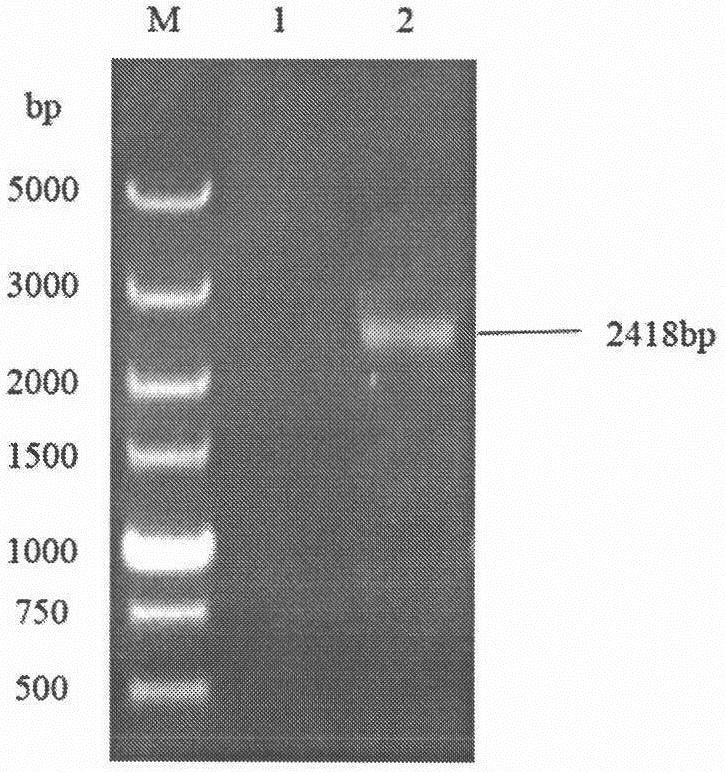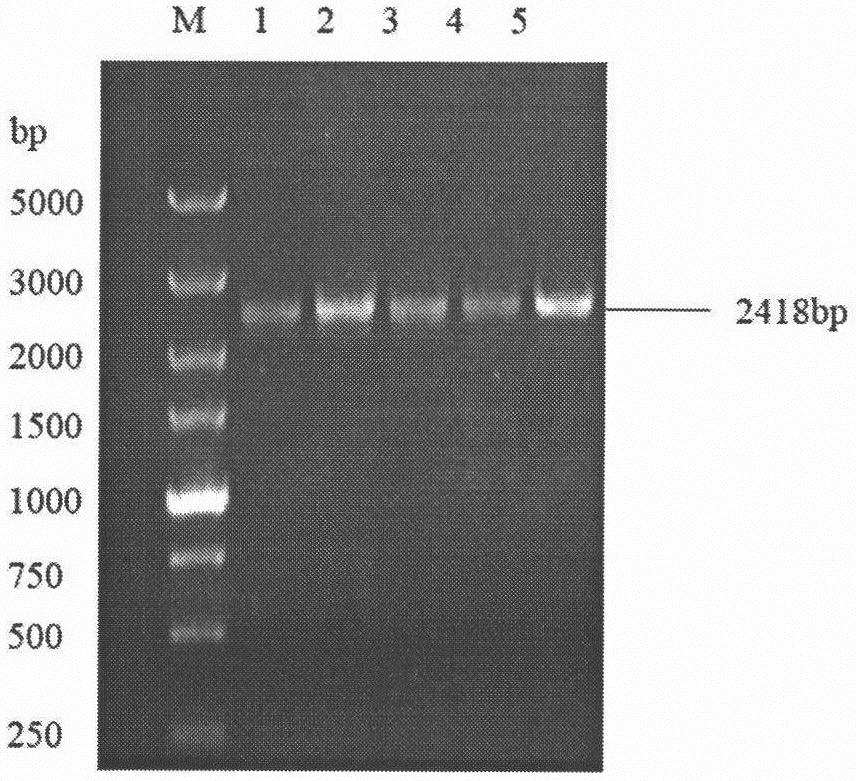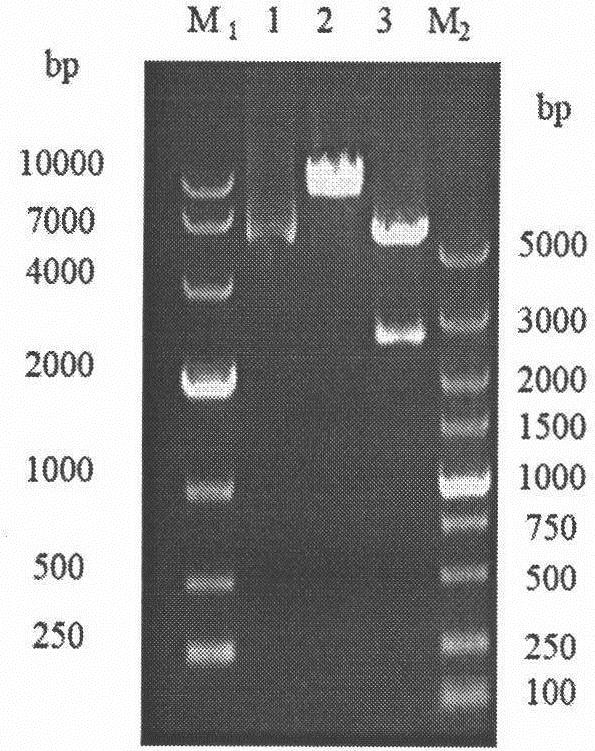Construction, identification and expression method of porcine ACE2 eukaryotic expression recombinant plasmid vector
A technology of recombinant plasmids and expression methods, applied in the biological field, can solve problems such as unclear biological functions, achieve the effects of stabilizing physiological metabolic capabilities, perfecting gene transfer and vector expression systems, and accurately modifying exogenous proteins
- Summary
- Abstract
- Description
- Claims
- Application Information
AI Technical Summary
Problems solved by technology
Method used
Image
Examples
Embodiment 1
[0030] Example 1 Obtaining of ACE2 Target Fragment
[0031] According to the complete porcine ACE2 gene sequence (KX756982.1) published on NCBI, the sequence of the target gene was searched and primers were designed. Hind III and Xho I restriction sites were inserted at the 5' ends of the upstream and downstream primers, respectively, and a 6×His tag was added to the downstream primers to facilitate subsequent NI column purification of the protein. Primers were synthesized by Nanjing Qingke Biotechnology Co., Ltd. Reverse transcribe RNA into cDNA, use cDNA as template for PCR amplification, reaction system: cDNA template 2uL, reaction conditions: pre-denaturation at 95°C for 5 minutes; denaturation at 98°C for 10s, annealing at 57°C for 15s, extension at 72°C for 30s, 32 cycle; PCR amplification results such as figure 1 , the results showed that a single band appeared (see lane 2), and the band size was between 2000-3000bp, which was consistent with the expected (2418bp) siz...
Embodiment 2
[0032] Example 2 Construction and Identification of Eukaryotic Expression Plasmid pcDNA3.1(+)-ACE2
[0033]The ACE2 PCR purified product was ligated with the pcDNA3.1(+) plasmid and recovered. The ACE2 gene fragment was connected to the pcDNA3.1(+) eukaryotic expression vector by T4 DNA ligase. Ligation system (10uL): including 1uL pcDNA3.1(+) vector, 7uL target sequence, 1uL T4 DNA ligase, 1uL 10×Buffer in a 200uL EP tube, mix well and place on a PCR machine at 22°C for 14 hours. The ligation product was transformed into DH5α competent cells, and the positive recombinant expression vector pcDNA3.1(+)-ACE2 was obtained by Hind III single enzyme digestion and Hind III, Xho I double enzyme digestion and identification, which was sent to Shanghai Handsome Biotechnology Co., Ltd. for sequencing . Monoclonal colony PCR verification results are as follows figure 2 , there is a single band between 2000-3000bp (swimming lane 1-5), and the fragment size is consistent with the expec...
Embodiment 3
[0043] Example 3 Transfection and expression of eukaryotic expression plasmid pcDNA3.1(+)-ACE2
[0044] 1. CHO cell culture
[0045] The medium used is DMEM / F12 medium, and the culture condition is 37° C. in a 5% incubator.
[0046] 2. Determination of the minimum lethal concentration of G418
[0047] 1) Set the lethal concentration of G418 as 0, 500ug / mL, 600ug / mL, 700ug / mL, 800ug / mL, 900ug / mL, 1000ug / mL.
[0048] 2) CHO cells were seeded in a 6-well plate at a density of 20% to 30%. After the cells adhered to the wall, the solution was discarded, washed with PBS, and 2 mL of DMEM / F12 medium was added to each well. G418 of different concentrations was added and mixed evenly.
[0049] 3) Change the medium every 2 days, culture for 10-14 days, observe the state of the cells every day, and take the lowest concentration as the benchmark for all the cells to die.
[0050] After the 6th day of G418 selection, the death of CHO cells was as follows Figure 4 . With the increase ...
PUM
 Login to View More
Login to View More Abstract
Description
Claims
Application Information
 Login to View More
Login to View More - R&D
- Intellectual Property
- Life Sciences
- Materials
- Tech Scout
- Unparalleled Data Quality
- Higher Quality Content
- 60% Fewer Hallucinations
Browse by: Latest US Patents, China's latest patents, Technical Efficacy Thesaurus, Application Domain, Technology Topic, Popular Technical Reports.
© 2025 PatSnap. All rights reserved.Legal|Privacy policy|Modern Slavery Act Transparency Statement|Sitemap|About US| Contact US: help@patsnap.com



